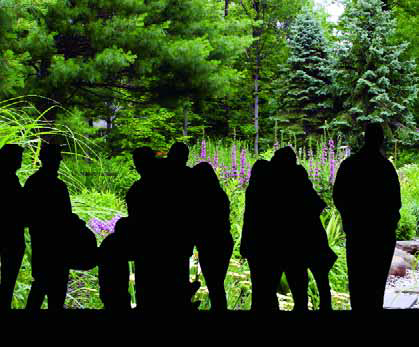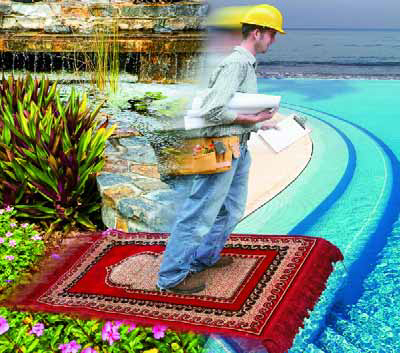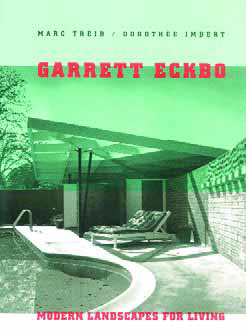ARTICLES
Advance Search
Aquatic Health
Aquatic Health, Fitness & Safety
Around the Internet
Aquatic Culture
Aquatic Technology
Artful Endeavors
Celebrity Corner
Life Aquatic
Must-See Watershapes
People with Cameras
Watershapes in the Headlines
Art/Architectural History
Book & Media Reviews
Commentaries, Interviews & Profiles
Concrete Science
Environment
Fountains
Geotechnical
Join the Dialogue
Landscape, Plants, Hardscape & Decks
Lighter Side
Ripples
Test Your Knowledge
The Aquatic Quiz
Other Waterfeatures (from birdbaths to lakes)
Outdoor Living, Fire Features, Amenities & Lighting
Plants
Ponds, Streams & Waterfalls
Pools & Spas
Professional Watershaping
Structures (Editor's Notes)
Travelogues & History
Water Chemistry
WaterShapes TV
WaterShapes World Blog
Web Links
Around the Internet
Aquatic Culture
Aquatic Technology
Artful Endeavors
Celebrity Corner
Life Aquatic
Must-See Watershapes
People with Cameras
Watershapes in the Headlines
With spring upon us, calendars of local events are filling up with garden tours of all shapes and sizes. From large estate tours and special events at botanical gardens to tours of wonderful neighborhoods staged by local garden clubs, there's much to be seen while wandering through the grounds and yards and viewing the work of other designers and architects. I've always enjoyed these tours and learn something from each and every one, whether it's about a new plant or plant combination or an installation technique shared by a generous designer or installer who's on hand for that purpose. On a completely business note, I also have to say that some of my best-ever
It may be a cliché, but I think there's something to be said for the notion that you need to know where you've been to see where you're going: The present and the future are always both a result of (and a response to) the past. For years, voices in this magazine have described, defined and advocated changes in the way the watershaping industry works. I, for one, have written volumes on what the pool and spa industry was once like and how the benefits of elevating our approaches flow to everyone from suppliers, designers and contractors to consumers as well. I've also meditated more than once on how professionals on the
It may be a cliché, but I think there's something to be said for the notion that you need to know where you've been to see where you're going: The present and the future are always both a result of (and a response to) the past. For years, voices in this magazine have described, defined and advocated changes in the way the watershaping industry works. I, for one, have written volumes on what the pool and spa industry was once like and how the benefits of elevating our approaches flow to everyone from suppliers, designers and contractors to consumers as well. I've also meditated more than once on how professionals on the
As the list of columns and articles appearing on these pages has grown longer and longer through the years, it has often been my pleasant duty to use my own column to call attention to
As the list of columns and articles appearing on these pages has grown longer and longer through the years, it has often been my pleasant duty to use my own column to call attention to
The design and installation of the circulation, filtration and chemical-treatment systems for the pools at St. Lucia's Jade Mountain was a task of monumental proportions and extreme technical, physical and logistical difficulty. The effort was spearheaded by watershaper/hydraulics expert Chris Barnes, who spent months on site installing precision systems engineered to provide years of nearly maintenance-free service. Installing the circulation systems for the pools at Jade Mountain was a challenge unlike any other. I was first approached about the project by my good friend, Skip Phillips, who explained that he had already been working on the project's design for several years and indicated that it was going to be something truly amazing. He observed that the owner and his design team didn't have anyone in place with any experience with the installation of extremely complex watershapes and suggested that I might be the one to step up to the challenge and keep
Looking for a surface material as unique as the resort itself, the designers of Jade Mountain turned to David Knox of Lightstreams to create completely original tile products for use in the structure's 25 vanishing-edge pools, with each one to have its own unique colors and optical qualities. Here, Knox describes the process of deploying glass tiles throughout one of the world's most unique and extensive watershape environments. For me, Jade Mountain is not simply a resort in St Lucia: It's more of a spiritual and artistic achievement - and one I helped fashion through a period of 15 months. I felt that sense of operating on a higher plane during my first visit to the parent resort, Anse Chastanet, in March 2005. There was something different about the project, just as there was
Looking for a surface material as unique as the resort itself, the designers of Jade Mountain turned to David Knox of Lightstreams to create completely original tile products for use in the structure's 25 vanishing-edge pools, with each one to have its own unique colors and optical qualities. Here, Knox describes the process of deploying glass tiles throughout one of the world's most unique and extensive watershape environments. For me, Jade Mountain is not simply a resort in St Lucia: It's more of a spiritual and artistic achievement - and one I helped fashion through a period of 15 months. I felt that sense of operating on a higher plane during my first visit to the parent resort, Anse Chastanet, in March 2005. There was something different about the project, just as there was
By now, we all know that pools and certain other watershape forms have been around since ancient times. It's my strong suspicion, however, that most of us who design and build backyard swimming pools today would fail a pop quiz about those who pioneered the 20th-century genre of pool design. I was among you in not knowing, for instance, about the seminal role played in this arena by a man named Garrett Eckbo - this despite the fact that he's one of the icons of landscape architecture. As a founding member of (and the "E" in) EDAW, Eckbo was responsible for some of the grandest public spaces in the United States. He was also, it seems, an innovator in residential garden and pool design who put his stamp on just about every basic pool form we use today. I picked up this knowledge from a book by Marc Treib and Dorothy Imbert called Garrett Eckbo: Modern Landscapes for Living (University of California Press, 1997). The 190-page volume covers the major career phases of a California-based designer and longtime professor who
By now, we all know that pools and certain other watershape forms have been around since ancient times. It's my strong suspicion, however, that most of us who design and build backyard swimming pools today would fail a pop quiz about those who pioneered the 20th-century genre of pool design. I was among you in not knowing, for instance, about the seminal role played in this arena by a man named Garrett Eckbo - this despite the fact that he's one of the icons of landscape architecture. As a founding member of (and the "E" in) EDAW, Eckbo was responsible for some of the grandest public spaces in the United States. He was also, it seems, an innovator in residential garden and pool design who put his stamp on just about every basic pool form we use today. I picked up this knowledge from a book by Marc Treib and Dorothy Imbert called Garrett Eckbo: Modern Landscapes for Living (University of California Press, 1997). The 190-page volume covers the major career phases of a California-based designer and longtime professor who


















